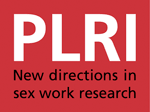The Cinderella syndrome: Economic expectations, false hopes and the
There are many complex and intersecting causes of human trafficking. These “push” and “pull” factors have been described at great length in the literature, although quantitative and qualitative evidence is often lacking. The identified “causes” of human trafficking span gender inequality, social and political unrest, media images of wealth, transition, conflict, weak regulation, the existence of a market for sexual services and real or perceived job availability abroad (Demir & Finckenauer, 2010: 83; Kelly, 2005: 241; Kligman & Limoncelli, 2005: 125–126; Zimmerman, 2007: 147). While I acknowledge these multiple factors, this article focuses primarily on the relationship between women’s ability

